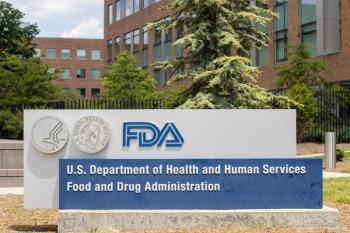
Editor’s blog: Significance of no statistical difference
As of Tuesday afternoon at this year's Association for Research in Vision and Ophthalmology (ARVO) meeting, all of the head-to-head comparison studies involving the efficacy and the safety of ranibizumab (Lucentis) and bevacizumab (Avastin) are officially IN.
As part of Ophthalmology Times’ coverage of the Association for Research in Vision and Ophthalmology meeting, Editor-in-Chief Mark L. Dlugoss wrote this blog with his observations of the meeting.
By Mark L. Dlugoss
Seattle-As of Tuesday afternoon at this year's Association for Research in Vision and Ophthalmology (ARVO) meeting, all of the head-to-head comparison studies involving the efficacy and the safety of ranibizumab (Lucentis) and bevacizumab (Avastin) are officially IN.
The final verdict (NO drumroll, please): bevacizumab and ranibizumab are statistically NO different in the treatment of neovascular age-related macular degeneration (AMD).
On Tuesday, the results of the Inhibition of VEGF in Age-related Choroidal Neovascularisation 2 (IVAN2) Study and the Groupe d’Evaluation Français Avastin versus Lucentis (GEFAL) Study, the French comparison study, were presented. The conclusion for both studies pretty much coincided with the results presented in the Comparison of AMD Treatment Trials (CATT), CATT2, and the original IVAN studies that were presented at previous ARVO meetings: That both drugs are basically equal (with some minor differences) in the treatment of AMD.
Hopefully, the debate between the use of both drugs is finally put to rest and ophthalmology can move forward (unless the French ophthalmic community decides to drag this on for another year with a GEFAL2). The foregone conclusion of these trials pretty much came to the same conclusion on most points that "there was no statistical difference between ranibizumab and bevacizumab."
Most of the ophthalmic community should be good with those conclusions. Even Genentech, the manufacturer of both drugs, has pretty much accepted these conclusions. The bevacizumab supporters have proven their point that their drug is just as good as the FDA-approved drug-at a fraction of the cost.
This is where a "statistical difference" can be found-the price. Ranibizumab costs about $2,000 an injection, while bevacizumab costs less than $100. That is a really big statistical difference, especially to a patient who has limited income or whose insurance may not be so generous to pay. To help patients get their treatments, physicians have that right to utilize that off-label option.
What gets lost in this debate is that price does not only affect the patient, but it can affect the physician. Physicians have an FDA-approved drug to treat AMD in ranibizumab, but it is expensive. They have patients who cannot afford ranibizumab, so physicians have turned to an off-label option (bevacizumab).
However, the difference that has not been studied is how the drugs are made and how that may affect patient outcomes. Ranibizumab is manufactured in controlled facilities under the supervision of Genentech, while bevacizumab is manufactured by compounding pharmacies with no FDA restrictions.
Three months after the initial CATT Study was released in 2011, a bevacizumab recall from a compounding pharmacy in South Florida occurred. Earlier this spring, there was another recall. This time, it was in Georgia.
The number of patients injured by these vials of bevacizumab compounded incorrectly has been minimal to this point, but at what point does the risk outweigh the gain? Does one patient losing his/her sight by a drug that is off-label and improperly compounded create a "statistical difference?"
Does the potential of malpractice suits arising from such incidences create another significant difference? That's another element that is never studied, unless it is in a legal forum.
These "statistical differences" need to be studied. Now, that the clinical studies are complete, ophthalmology may have to turn to the legal review.
One final note about this year's ARVO meeting: I woke up this morning, looked out my hotel window and it was cloudy and overcast, with the temperatures in the 50s. I realized then I wasn't in Fort Lauderdale anymore!
For more articles in this issue of Ophthalmology Times Conference Brief,
Newsletter
Don’t miss out—get Ophthalmology Times updates on the latest clinical advancements and expert interviews, straight to your inbox.



















































.png)


